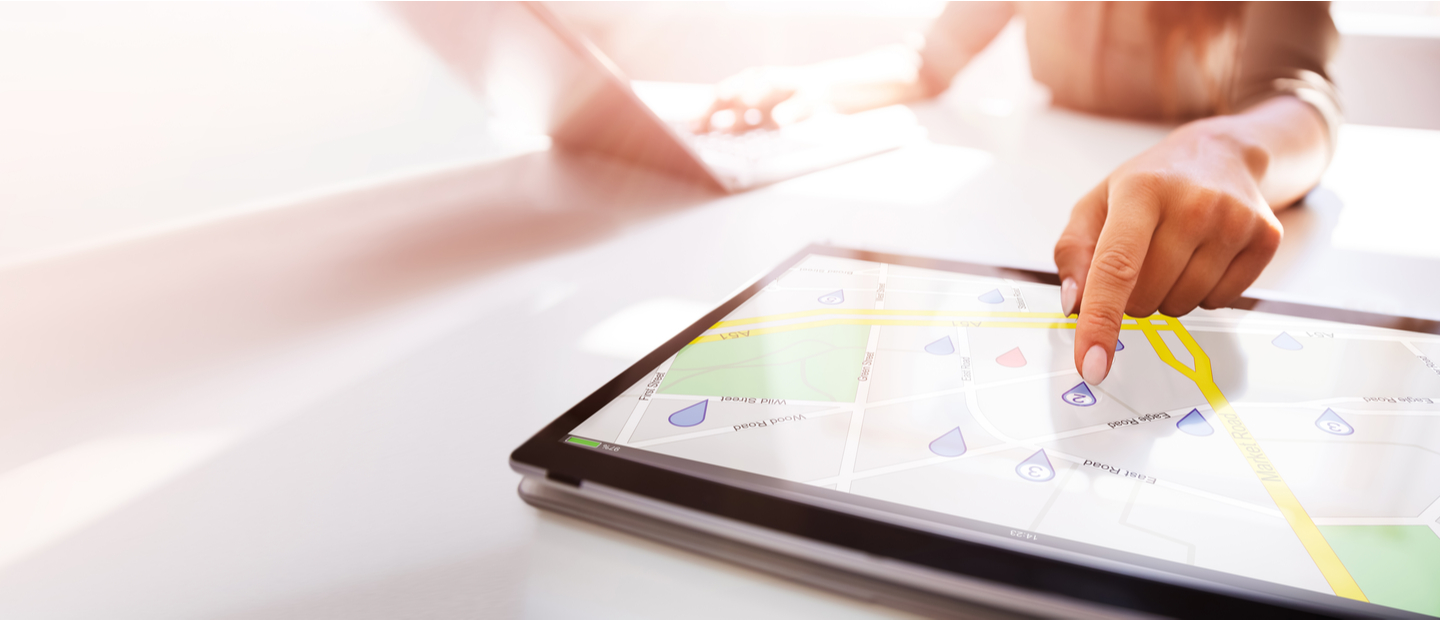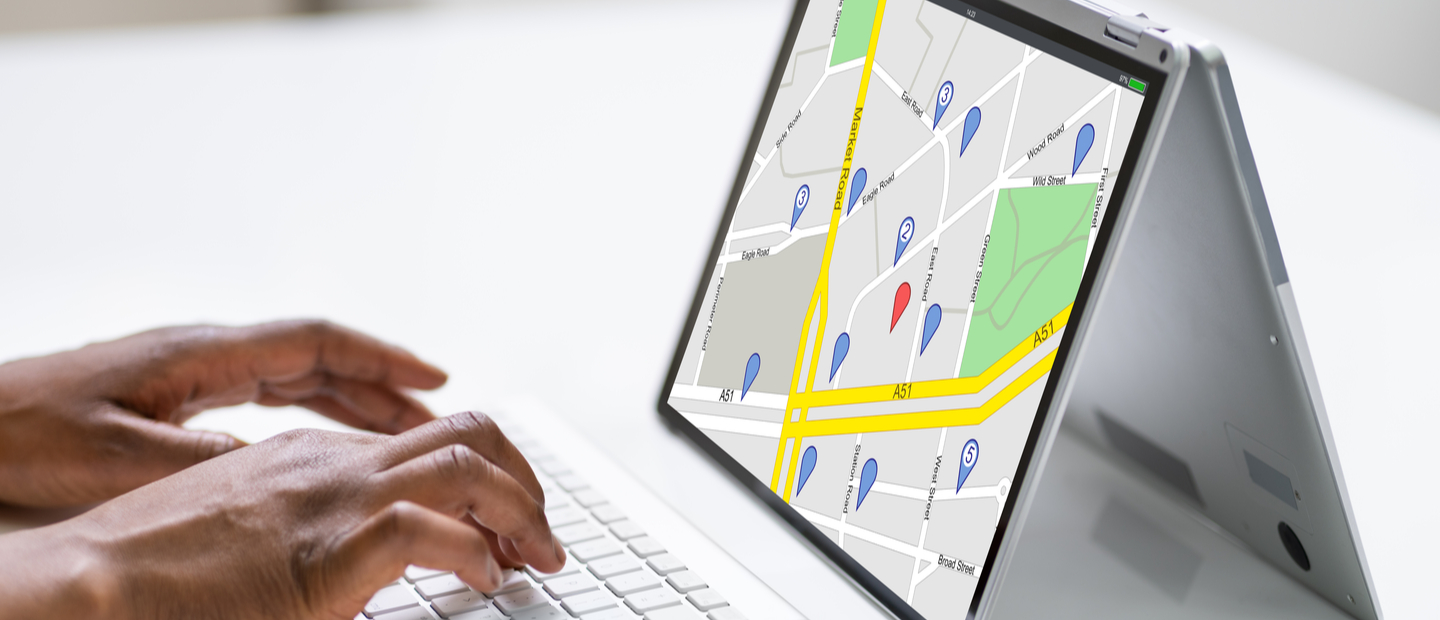Getting Started with Mobile Geolocation Testing
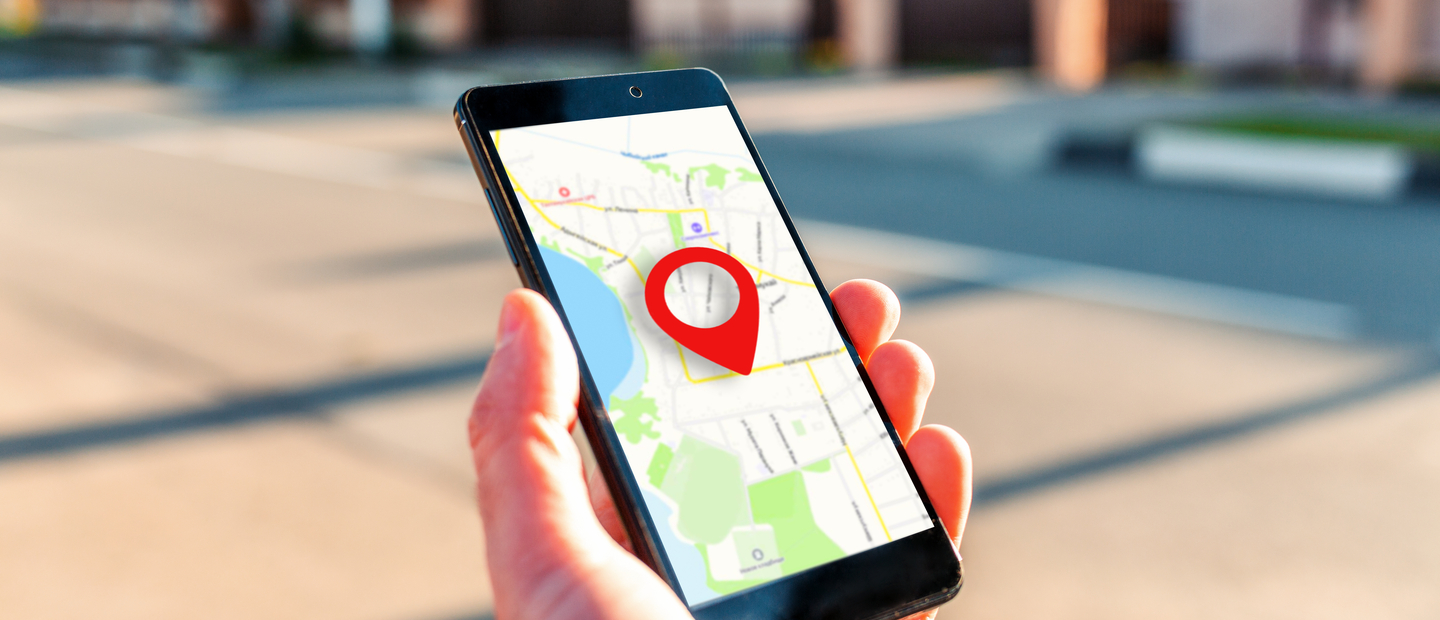
This introductory article on geolocation testing for mobile applications is intended for quality assurance (QA) and test engineers working with web applications, and cross-platform (React Native) and native (iOS, Android) mobile applications. It offers step-by-step instructions on how to start geolocation testing on your project, and also describes the pros and cons of several possible approaches.
Here you will also learn such key concepts as back-end representation, data generation, data validation, emulation, and testing levels using REST API. Geolocation is essential for a large part of the projects Django Stars has been involved in over the past 13 years as part of the logistics development services. You can read more about them on our case studies page.
Read more: Location-based application development guide
What Geolocation Is and Why You Need Geolocation Testing
It’s no longer just GPS navigation apps that use geolocation. Locations, route directions, and estimated time of arrival are features being implemented in transportation, food delivery, e-commerce, games, social media – in fact, the list of application categories not using geolocation is shrinking every day.
For an app-based company, business logic often depends on action triggers based on the location of people and objects. This makes a solid understanding of how to perform geolocation testing a must-have ingredient in making such projects a success.
Read Also: How to Develop and Integrate Route Optimization
Before diving in, a refresher on the definitions:
- Geolocation. The identification or estimation of the real-world geographic location of a mobile phone or computer. Because we are dealing with devices and networks, it is important to be aware of the issues we may encounter (uptime, connection speed, accuracy) and, therefore, of the nature of the estimation part of the definition.
- Geolocation testing. The technique of identifying the geographical location of a device via the internet. In other words, this kind of location-based testing for mobile apps includes everything related to the position of an object in space, actions based on the object’s position regarding other objects, and the effect on different processes and areas.
How Geolocation Is Represented on the Application Backend
Geolocation requests and responses are represented as JSON (GeoJSON), and the content type that stores geodata is application/json.
What is GeoJSON?
GeoJSON is an open-standard format designed to represent simple geometry objects, along with their non-spatial attributes. It is based on JSON, the JavaScript Object Notation.
What is Geodata?
Of the many Geodata geometry objects, the key ones are point, path, polygon, track, and feature.
Point
A Point is the combination of os latitude, longitude, and elevation coordinates. We can imagine a Point in a three-dimensional vector space represented by coordinates on the x-, y- and z-axis. The main Point parameters are latitude and longitude, since elevation coordinates are used more rarely and only in specific cases, like atmospheric pressure calculation.
There are two important things to remember about the Point:
- The standard is that the latitude must always be listed first, followed by the longitude (not everyone seems to know this);
- The fifth and later decimals in latitude or longitude have little significance, with the 5th decimal representing a little over 10 feet, or less than 5 meters.
In a food delivery app example, the Point represents the pick-up location of the order, the drop-off location for the customer, and the delivery person’s location, typically with only their latitude and longitude coordinates.
Point code representation
{
"geometry": {
"type": "Point",
"coordinates": [
13.381969928741455,
52.50479381812203
]
}
}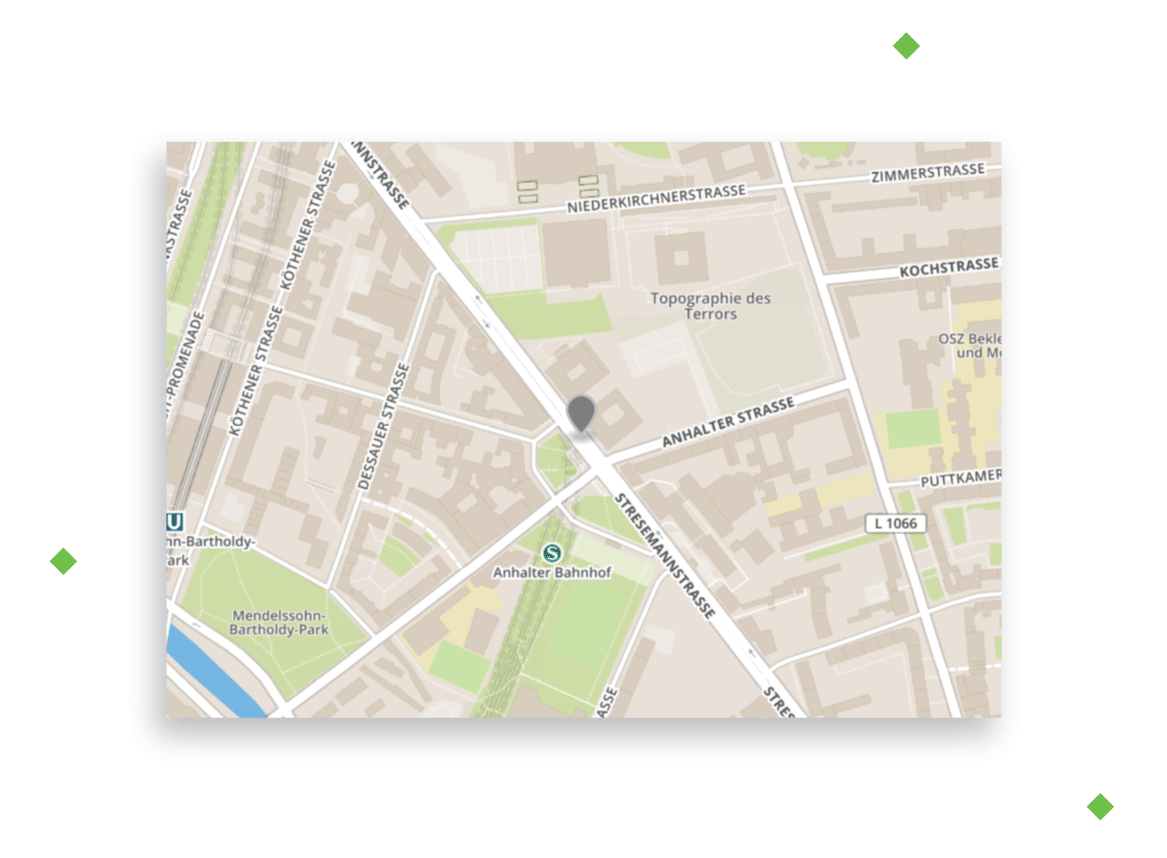
Path
A Path is a set of Points. You connect two or more Points to get a Path. As a result, this feature can show how a device was moving during the day or build the path to a destination.
Using the same food delivery app example, the Path shows the distance to be traveled from the delivery person to the pick-up location, and the route from the pick-up location to the drop-off location.
Path code representation
{
"geometry": {
"type": "LineString",
"coordinates": [
[
13.379566669464111,
52.50663540575101
],
[
13.38233470916748,
52.50445422616214
],
[
13.386626243591309,
52.50536850623138
],
[
13.38611125946045,
52.50638725305074
]
]
}
}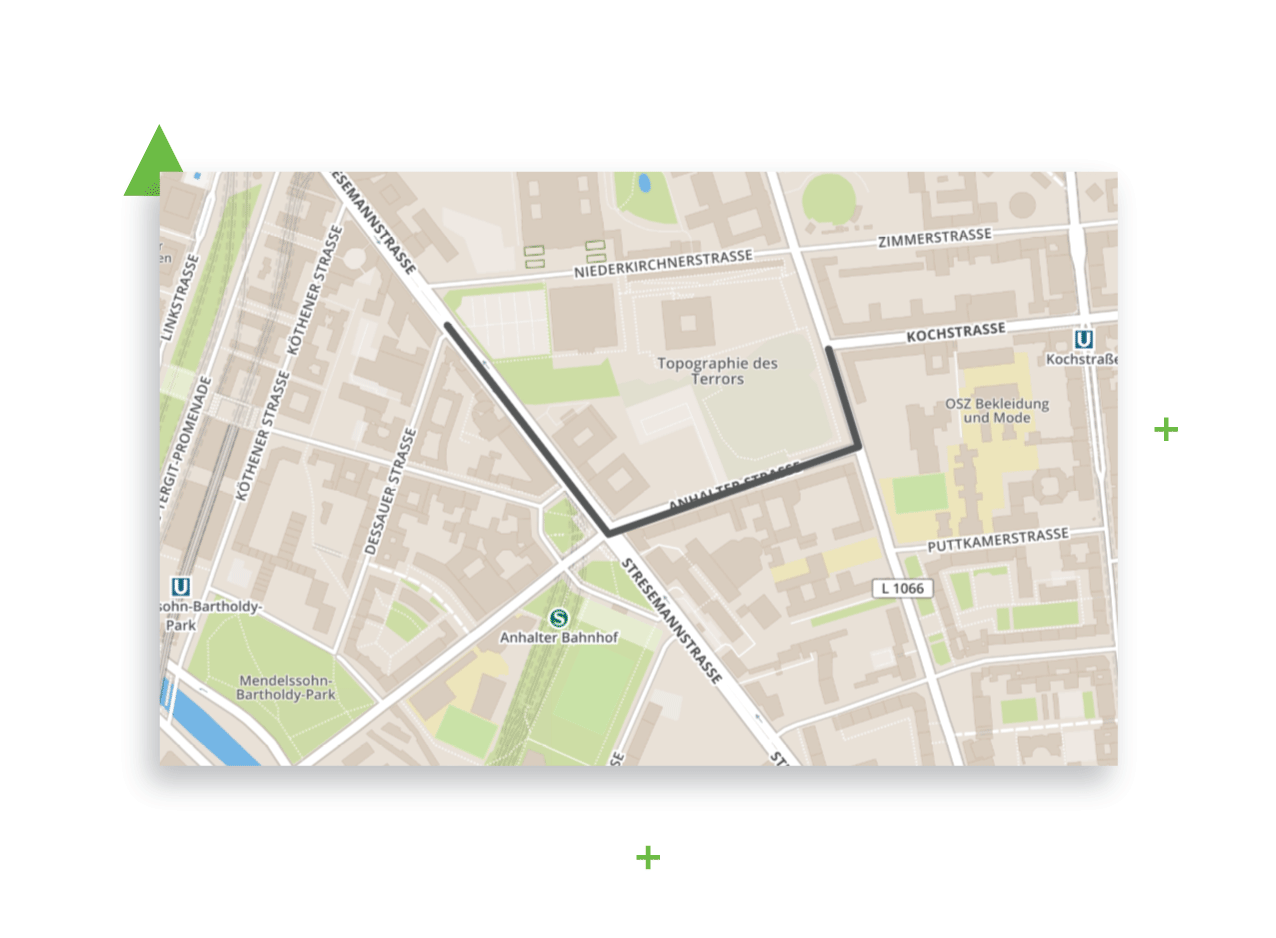
Polygon
A Polygon is an enclosed set of points. A Polygon looks like a Path, but with one important difference. The main rule for a Polygon geo object is to have the same first and last Point. As a result, your Path ends at the same Point where it started and forms an enclosed set of points called the Polygon. In other words, we get an area we can calculate or define whether or not a Point belongs to specific Polygon (i.e., area). There is one issue with Polygon: this kind of an object cannot exclude another Polygon or Point from itself (i.e., you cannot create one Polygon with a hole in the middle).
Using the food delivery app example, the Polygon will mark the zone where the delivery person can pick up the request and the zone where they will deliver the request.
Polygon code representation
{
"geometry": {
"type": "Polygon",
"coordinates": [
[
[
13.383235931396484,
52.50723619069716
],
[
13.382356166839598,
52.50448034871372
],
[
13.386626243591309,
52.50539462823964
],
[
13.383235931396484,
52.50723619069716
]
]
]
}
}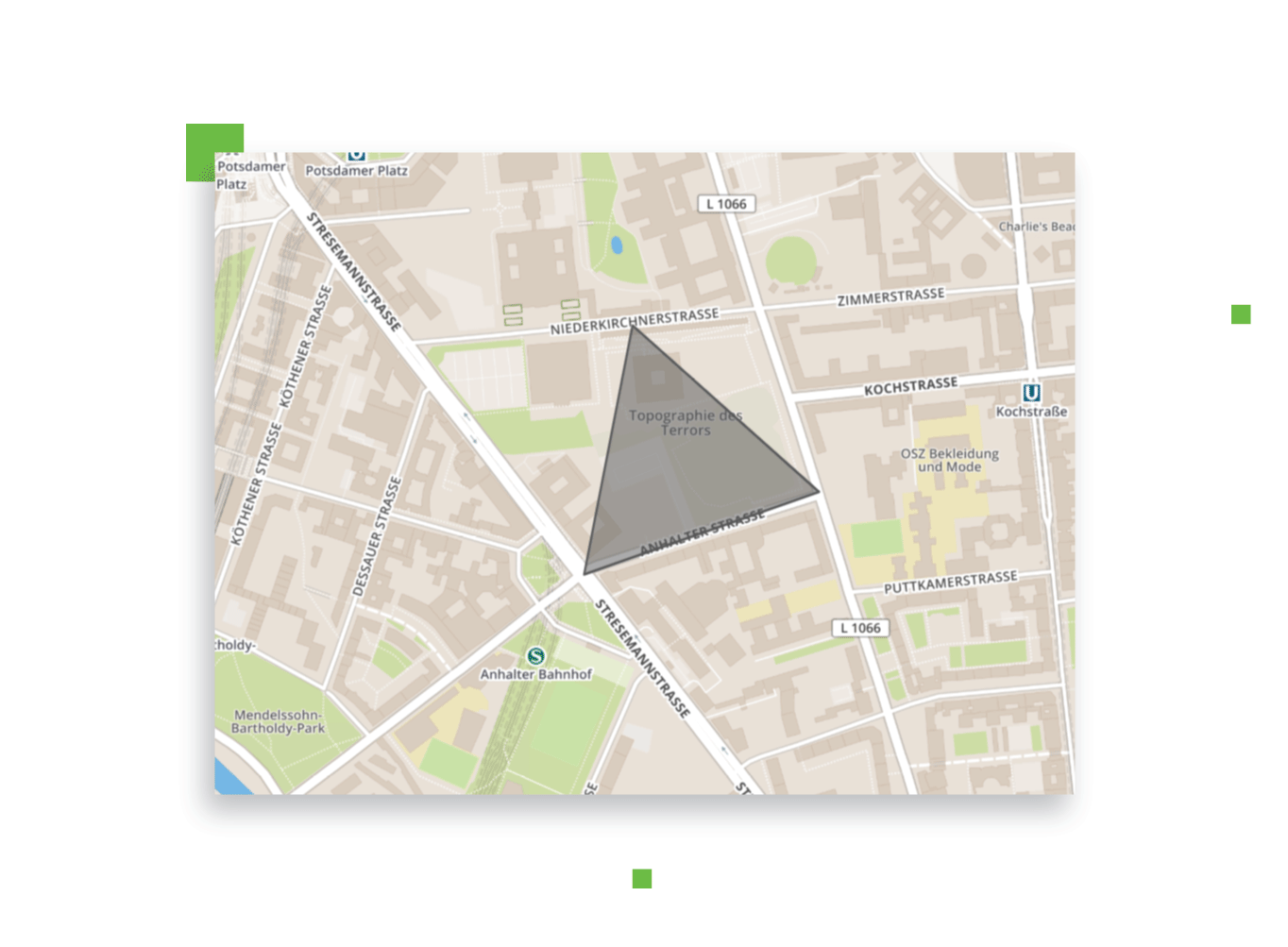
Track
A Track is a set of Points with a Timestamp. Add time to every received Point, and you get a Track. Track provides information about a device’s location at each moment. This type of geo object is usually stored in GPX format, an XML schema designed as a common GPS data format for software applications. It can be used to describe waypoints, tracks, and routes.
Track code representation
<gpx>
<wpt lon="-78.4814684" lat="38.0283608">
<name>TP001</name>
<ele>139.36167907715</ele>
<time>2017-05-18T12:20:25Z</time>
</wpt>
<wpt lon="-78.48174" lat="38.02844">
<name>TP002</name>
<ele>139.58670043945</ele>
<time>2017-05-18T12:20:37Z</time>
</wpt>
<wpt lon="-78.4817437" lat="38.0284428">
<name>TP003</name>
<ele>139.79161071777</ele>
<time>2017-05-18T12:20:39Z</time>
</wpt>
<wpt lon="-78.48159" lat="38.02877">
<name>TP004</name>
<ele>139.78443908691</ele>
<time>2017-05-18T12:21:14Z</time>
</wpt>
</gpx>Feature
A Feature is any geo object with additional information. All additional information related to any geo object can be stored in “properties” of the object, including time, address, etc.
In applications, this is useful for displaying a time when devices send coordinates, addresses, requests’ stage, etc.
Feature code representation
{
"type": "Feature",
"geometry": {
"type": "Point",
"coordinates": [
30.492553710937496,
50.46236709872438
]
},
"properties": {
"created_time": "2019-07-04T12:15:32.753544Z",
"address": "st. Glubochitskaya, 44"
}
}Preparing for Geolocation Testing
To start geolocation testing, you need to prepare devices. For a better experience, you must have both iOS and Android gadgets. If you have a web application, you must also perform web geolocation testing.
Here are a few steps to start geolocation app testing right:
- Install the last stable version of the app you need to test on your iOS and Android devices.
- Install the tool for geodata emulation.
- Disable Wi-Fi and Data Transfer on both devices.
- Connect your Android device to the Android Debug Bridge. Then, allow the device to mock the app’s location. To change GPS location, Go to Settings > Developer options > Select mock location app and run the necessary configurations. If your device uses other geolocation tools than GPS, go to Settings > Location > Mode > Device only.
Enable developer mode on your iOS device. Go to Settings > Privacy & Security > Developer Mode and tap the switch. Sometimes, you must modify the Property List file associated with the native iOS Maps app.
How to Perform Geolocation Testing
Because geolocation depends on devices and networks, and because real-life conditions are never ideal (in addition to the code itself), for best results it is always smart to test applications using a range of physical and emulated Android and iOS mobile devices. Let’s review the tools and steps that can help with mobile geolocation testing.
Geolocation data generation and validation tools
Effective and thorough geolocation testing requires tools and services to help generate and validate test data. Using the geolocation testing tools below will increase the testing speed and provide extra time for exploratory or other testing types.
Geojson.io
This free web service offers the ability to generate a GeoJSON code for Point, Path(LineString), and Polygon objects by simply clicking on the relevant place(s) on the map. Additionally, you can see the length of the built Path (in meters, kilometers, feet, yards, miles) as well as the square of the built Polygon (in square meters, square kilometers, square feet, acres, square miles).
GeoJSONLint
This free web service helps validate GeoJSONs. Using this simple tool, you can paste any GeoJSON into the validator and get a visualization of the object on the map to verify whether it matches the expected result.
AllTrails
AllTrails is your free guide to outdoor recreation. It boasts a list of over 60,000 trails in its database and is used by more than 10 million outdoor enthusiasts each year.
Upon opening the app, you’ll be greeted by a list of nearby hiking, biking, and running trails. Scroll through and you’ll find plenty of trail options, each categorized by difficulty level as well as user ratings.
| Geojson.io | GeoJSONLint | AllTrails | |
|---|---|---|---|
| Ease of use | It allows to work with visual maps, which makes it simple to understand. | The tool may be complex to use. | It’s user-friendly and easy to use, even for non-developers. |
| Perfect for | Both novices and experienced developers | Just for developers | Non-developers |
| Testing deepness | All kinds of geolocation testing | All kinds of geolocation testing | Basic geolocation testing |
| User-friendly UI | User-friendly | Not user-friendly | User-friendly |
| Cost | Free | Free | From $2,99 monthly |
Android geolocation emulation
Data generation is only the first step, as it means nothing without emulation. Emulation assists in removing the need to run and drive all over the place for the testing of Android geo-location. Instead, use common approaches of emulation.
For Android-based devices, at the moment we have found 3 ways to do it: using Android API calls, built-in Android geo mock features, and purpose-built apps.
Android API calls
Here are the steps to emulate geodata using Android API calls:
- Turn on “developer” mode in the device settings by selecting the “Build number” section (About phone > Build number) several times. After a few taps, you’ll see a small pop-up alert telling you that “You are now X steps away from being a developer”, with a number that counts down with every additional tap.
- Connect your Android device to a laptop or PC using a USB cable.
- Make a request through the TELNET protocol by using the Command line and send the request, which will change location coordinates on the device:
import telnetlibport = b'5554' host = b'192.168.88.161' device = telnetlib.Telnet(host=host, port=port) device.write(b'geo fix ' + xpoint + b' ' + ypoint + b' ' + b'\n')
Android emulator built-in geo mocks
You can also emulate the Android device itself using your laptop or PC in connection with Android Studio.
- Open Android Studio
- Launch any Android Emulator
- Click the “More” button
- Edit Longitude and Latitude fields
- Upload GPX/KML file and click Start button
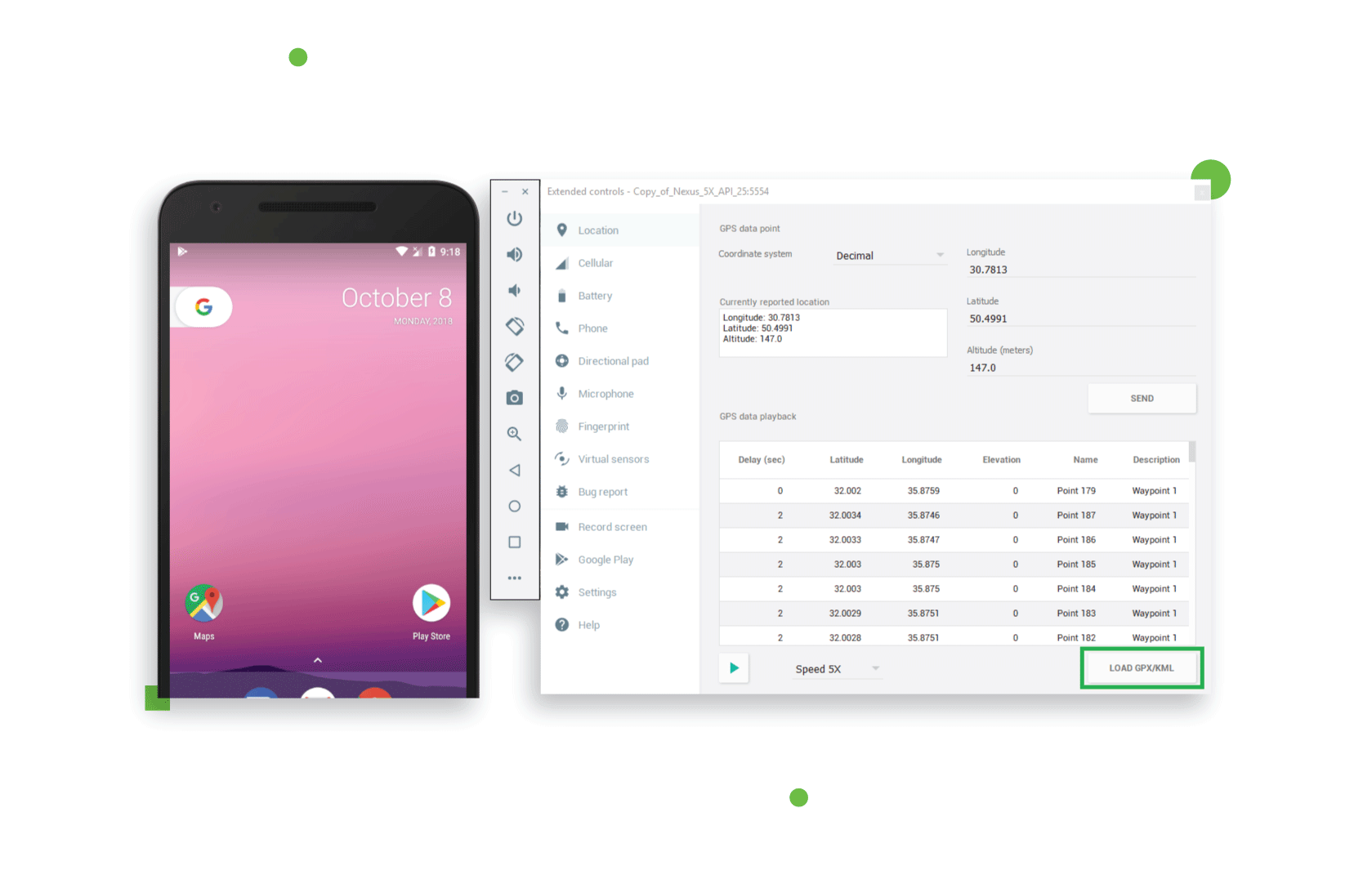
On-device apps
The easiest way to emulate location data is by using a dedicated app made exactly for this purpose. The only thing you’ll need is an Android device and the internet. Out of many apps in this category, one of the best is Lockito. This app can build a road-based Path from point A to point B, including a speed setting. Also, it allows for the reuse of previously created Tracks.
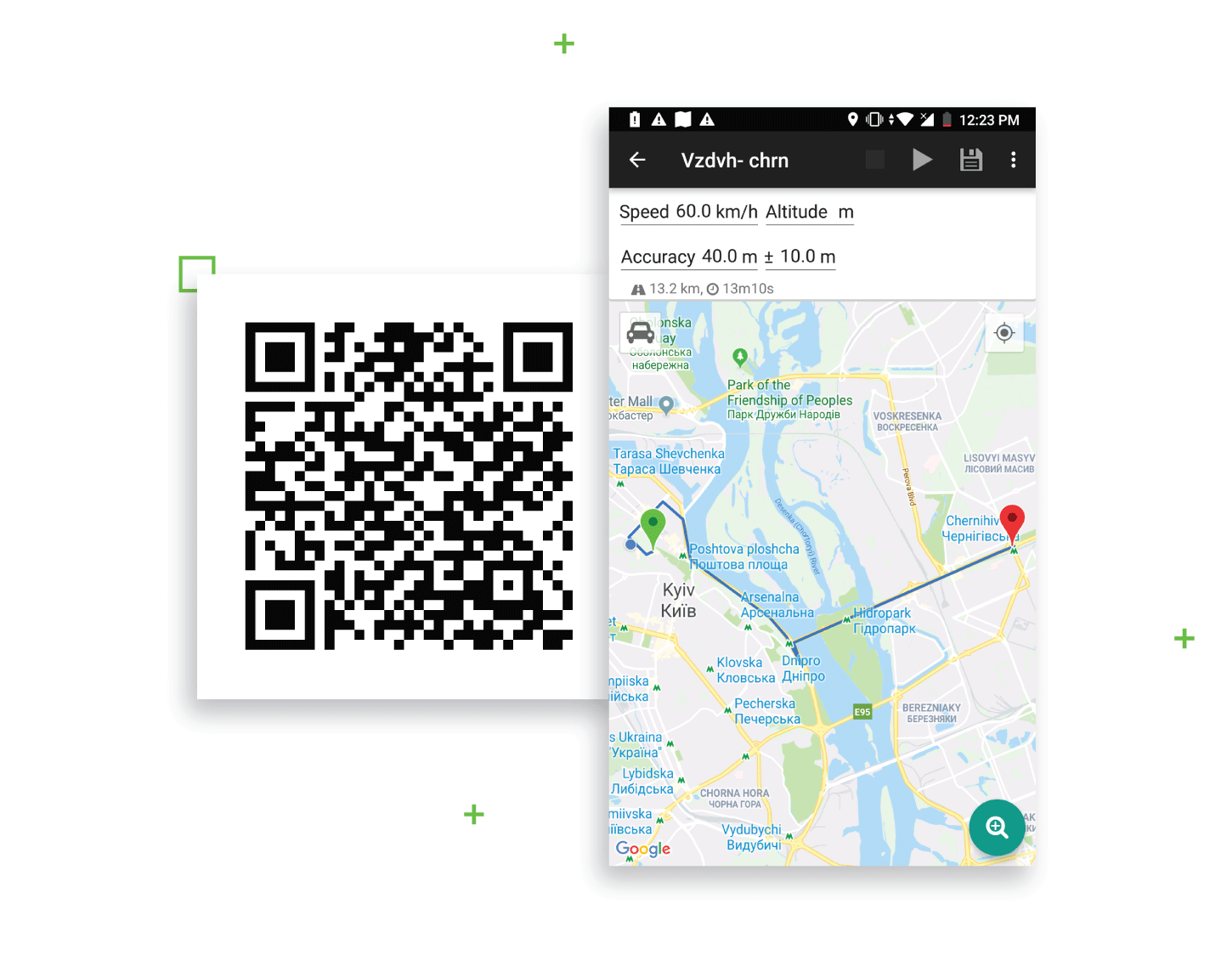
iOS geolocation emulation
iOS devices can also emulate geodata, but it is not as easy as it is with Android due to App Store restrictions that do not allow apps to change geolocation position. Still, there are several ways to generate mock data for IOS devices.
Xcode (for MacOS)
Xcode is an integrated development environment for macOS containing a suite of software development tools developed by Apple for developing software for macOS, iOS, iPadOS, watchOS, and tvOS. This tool gives you an opportunity to mock data on emulators as well as on real devices plugged into the laptop. You will be able to set custom location data (Screen 1) and upload a GPX file to emulate movement (Screen 2) on the device.

iSpoofer (for Windows)
iSpoofer can help you mock location data only for a physical device (i.e., it does not mock data using an emulator). The only issue with the tool is that it is not free, with the exception of a 3-day free trial period. Still, Windows users can use it without creating a virtual machine with MacOS.
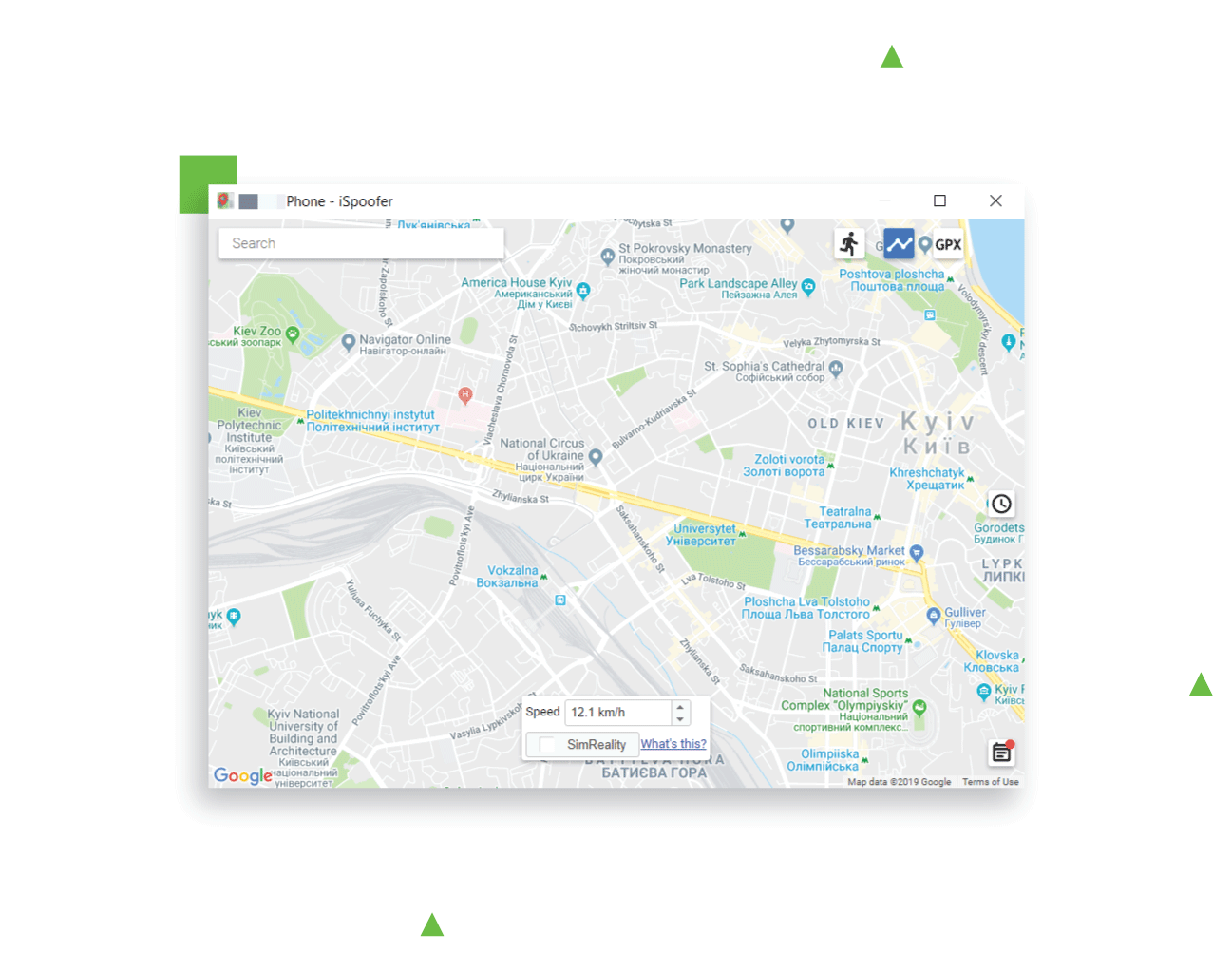
Geolocation application testing levels
As you can see from the above, there are three key ways geolocation apps can be tested: API calls, on emulated devices using mock data, and on physical devices with real data.
Read more: How to Develop a Location-based App with React Native
API calls
Because all geolocation data is exchanged using APIs, the calls with which devices will communicate and exchange location data must be tested. We used Python with a Requests library, but any manual testing tool like Postman or scripts in any programming language will do. Of course, when testing API calls, you will need neither an emulator nor real devices.
Device emulator with mock data
Most Geolocation testing uses emulated devices with mock data, since the result is that all devices and emulators eventually generate API calls to communicate geolocation data with the database. Using emulators with mock data has its place, but you should be aware that this is still a very conceptual way to geolocation test and is only an approximation of real-world conditions.
Physical devices with real data
Considering the above, real data testing on physical devices is definitely the most important level of geolocation testing, because we cannot predict all possible cases that can happen in real life using an application. While expensive and time-consuming, if used strategically this type of testing can help you avoid major problems in a chaotic environment where networks and devices are running in far-from-idealized conditions.
Case Studies and Real-World Examples
Django Stars has extensive experience using geolocation-based features to design mobile and web applications. Here are a few examples of geolocation app development from our completed projects.
Azyan. It’s a Jordan food delivery that provides 20-minute delivery from restaurants and shops. Such speed would be impossible without a proper geodata-based system. We’ve developed an app for delivery persons with zone-based order distribution and a live map with dynamic routes, hub locations, and delivery zones.
One of the biggest challenges we faced when developing the Azyan app was not allowing users to add addresses, as Google Maps did not have address pins for Amman. We had to find creative solutions and work with map coordinates to ensure the user experience was not compromised. We’ve had to perform lots of location-based testing for mobile applications to ensure everything functions correctly.
AI-driven logistics solution. It’s a feature-rich system that enables companies to optimize the garbage disposal process. Designing the mobile application, we’ve aimed to combine rich functionality for drivers and the ability to communicate with admins and managers seamlessly. We’ve adopted a geo-based navigation system that helps drivers plot routes and managers control and measure all delivery and inventory management processes in real-time.
We’ve developed applications that bring seamless cooperation between the business side and drivers. Geolocation tools were core elements of a few basic features of this project. Testing geolocation applications was crucial because the client must get all data immediately, so we’ve used location mocking tools to check the system performance in different conditions.
Read more about this case study here.
Geolocation Testing Advice
To summarize geolocation testing, it is definitely an important aspect of any location-based app that can’t be overlooked. Luckily, with some dedication, this discipline can be mastered even by someone without too much initial experience. Keep in mind:
- Do not be afraid of geolocation testing. It is most likely about just 4 parameters in all (i.e., longitude, latitude, elevation and time).
- Latitude (1st) and longitude (2nd) have standard positions. Remember them, and don’t confuse them.
- Real data differs from mock data. It is not the same, so test your app using with real devices and data at least selectively.
- When testing, you can simply move the target object nearer to the device if you cannot emulate device movements.
- Be aware of how the application logic works in the back-end.
Further Reading on Geolocation
- https://macwright.com/2015/03/23/geojson-second-bite.html for more information about GeoJSON
- https://gisgeography.com/gis-formats/ about various geodata formats
- https://github.com/tmcw/awesome-geojson lear about other instruments related to geojson in one github repository
Conclusion
This article covered how to get started with mobile geolocation testing. Hopefully, these basics about what geolocation is and why you need geolocation testing, as well as a few practical tips above on how to test geolocation for a mobile app, will be helpful to you. Don’t hesitate to contact Django Stars if you need expert help developing and testing geolocation in your project.
- Is geolocation testing different for websites?
- Yes, geolocation testing can be different for different websites, depending on the specific features and functionality that the website uses geolocation for. Some websites may use geolocation to personalize the user experience, or to provide location-based search results, while others may use geolocation for security or compliance purposes. As a result, the specific test cases and procedures that are used for geolocation testing will vary depending on the website and its intended use of geolocation.
- How does your company conduct location-based testing?
- Django Stars specialists conduct location-based testing by using a variety of tools and methods such as physical and emulated mobile devices, geolocation data generation and validation tools, and various emulation methods such as Android API calls, built-in Android geo mock features, and on-device apps for Android devices or Xcode and iSpoofer for iOS geolocation emulation. To generate and validate test data, we use popular apps like AllTrails, Geojson.io, GeoJSONLint, and Lockito app.
- What technique is used for geolocation?
- The most common method used for geolocation is Global Positioning System (GPS). But also, lots of other tools can be utilized for geolocation, like BLE and WiFi network-based technologies.
- How to test a website in different locations?
- To test a website in different locations, you need to install developer tools for mocking geolocations on your iOS and Android devices. Geolocation apps can be tested in a variety of ways including API calls, on emulated devices using mock data, and on physical devices with real data.
- What is the difference between geolocation and GPS?
- Geolocation is a programming process to determine a mobile device location. GPS is the most precise geolocation tool but not the only one. For example, Bluetooth, WiFi, and network-based technologies can also be user for geolocation purposes.







